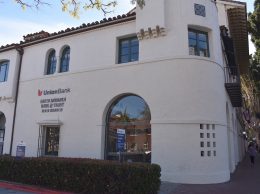Op/ed: To protect community assets, Congress needs to level the playing field for small banks
By Laurie Leighty on Feb. 1, 2013
It’s often said that all politics are local, meaning that what matters most to people is what happens in their communities. We could say the same thing about banking.
Community banks are the ultimate local institutions — their very existence depends on and contributes to the economic health of their hometowns. They do this primarily by making loans. When a community bank makes loans it’s actually increasing the money in circulation in its area, which strengthens and grows the local economy.
It would be easy to talk about all the ways community banks are vital parts of their cities and towns, and why they matter more than ever. Their intimate connection to the community — as personal as it is economic — and their ability to help turn small businesses into larger success stories are all worthy of note by a public that’s grown weary of hearing about bad behavior by faceless big banks.
Fed Chairman Ben Bernanke has long acknowledged the importance of community banks to their local economies. “Community banks remain a critical component of our financial system and our economy,” Bernanke said in an address to the Independent Community Bankers of America in March 2012. “They help keep their local economies vibrant and growing by taking on and managing the risks of local lending, which larger banks may be unwilling or unable to do. They often respond with greater agility to lending requests than their national competitors because of their detailed knowledge of the needs of their customers and their close ties to the communities they serve.”
According to the Independent Community Bankers of America, community banks are the primary source of lending for small businesses and farms. Even though lenders with less than $1 billion in assets compose just 10 percent of the banking industry as measured by assets, they made 37.5 percent of outstanding bank loans to small business. Community banks with less than $10 billion in assets made 57.9 percent of outstanding bank loans to small businesses.
New hurdles
But community banks today face new regulatory hurdles that impede their ability to serve their customers. These speed bumps were put in place to check the questionable practices of a handful of large national banks. The result: an uneven regulatory playing field for community lenders.
In response to the nation’s economic meltdown in late 2008, President Obama signed the Dodd-Frank Wall Street Reform and Consumer Protection Act on July 21, 2010. The massive bill imposed an avalanche of new financial regulations and created the U.S. Consumer Financial Protection Bureau, or CFPB.
Reasonable people can, and have, debated the wisdom and efficacy of legislating the most sweeping financial reforms since the Great Depression. What is indisputable, however, is that banks are already highly regulated. Dodd-Frank and the CFPB merely created another level of compliance — a burden that, ultimately, consumers will pay for.
For community banks, these new regulations are as onerous as they are expensive. The small banks didn’t create the banking crisis, but they have to follow the same restrictive guidelines as the giant ones that did. Fairness notwithstanding, it makes it more difficult to serve and invest in their communities.
And with a handful of big banks controlling 60 percent of deposits in this country, it’s clear small banks already face a competitive disadvantage.
New opportunities
There is no doubt Dodd-Frank has made the big banks more reluctant to lend. They typically lend money through product lines that, while efficient, tend to lack flexibility. This is where community banks play such a vital role.
Community banks have an understanding of the local economy that someone making a loan decision in Los Angeles or San Francisco can’t begin to match. Here’s why: Community banks are another small business in the local economy. The challenges they face are the same that every other small, local business does: strategic planning, marketing, day-to-day operations, finances, staffing, business development and more.
For the people running a community bank, the local economy is no abstraction or a cell in a spreadsheet. It’s where their home is, too, and they care deeply about what happens in their community because they are involved with local schools, friends and neighbors.
That connection to and involvement with a community gives a small, local banker the ability to support small business and grow the regional economy.
That’s why Congress needs to find a way to level the regulatory playing field for community banks. Now, more than ever, these banks fill a crucial need for smart lending and cultivating small businesses. It’s what they’ve always done, and what their communities need now.
• Laurie Leighty is the senior vice president of operations and human resources for Santa Barbara-based American Riviera Bank. Contact her at [email protected].












